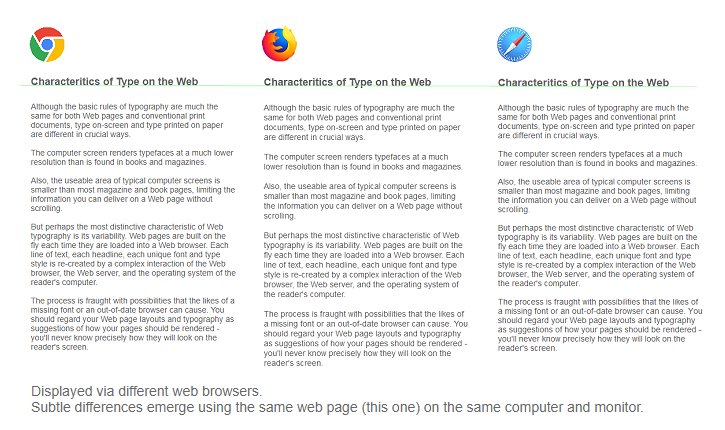Characteritics of Type on the Web |
||
| Although the basic rules of typography are much the same for both Web pages and conventional print documents, type on-screen and type printed on paper are different in crucial ways. The computer screen renders typefaces at a much lower resolution than is found in books and magazines. Also, the useable area of typical computer screens is smaller than most magazine and book pages, limiting the information you can deliver on a Web page without scrolling. But perhaps the most distinctive characteristic of Web typography is its variability. Web pages are built on the fly each time they are loaded into a Web browser. Each line of text, each headline, each unique font and type style is re-created by a complex interaction of the Web browser, the Web server, and the operating system of the reader's computer. The process is fraught with possibilities that the likes of a missing font or an out-of-date browser can cause. You should regard your Web page layouts and typography as suggestions of how your pages should be rendered - you'll never know precisely how they will look on the reader's screen. |
||
